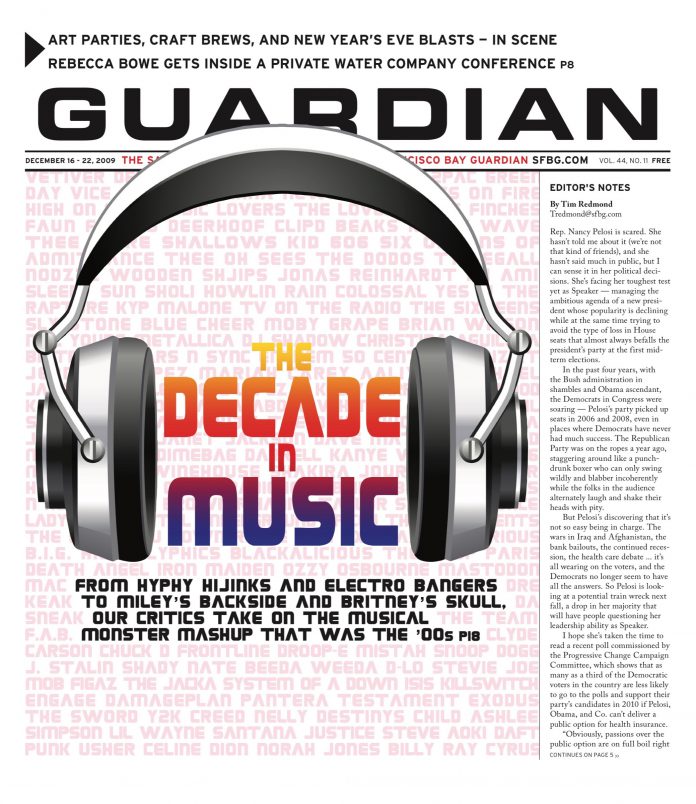paulr@sfbg.com
DINE Two autumns ago, I popped in on Bacco, in Noe Valley, and found a house in good order. The restaurant, opened by Vincenzo Cucco and Paolo Dominici in 1993, turned 14 that fall, and little had changed through the years except that the color scheme of the two dining rooms had gone from pumpkin to butter and sage, and a "Zagat-rated" sticker had appeared in the window at the door. I left with a sense of calm reassurance, like a parent who’s just peeked through a bedroom door to see a child safely tucked in.
But safety is one of the world’s illusions. Last spring, Dominici disappeared while spearfishing in Hawaii. In 2006, he and Cucco had opened another restaurant, Divino, on the Peninsula, with Cucco running the newer place and Dominici remaining at Bacco. The unexpected death left the older restaurant without a captain. Uncaptained restaurants have a way of foundering — they can too easily lose their way, fade, fold, or end up in other hands.
Luckily for Bacco, those other hands are Cucco’s, and so the restaurant remains within the family, as it were. He has once again taken up the toque in the kitchen, while longtime manager Luca Zanet continues to run the front of the house; ownership proper has passed into the hands of Dominici’s widow, Shari. This is about as favorable an outcome as we could hope for from an unforeseen disaster, and, after a period of turbulence and uncertainty, the ship appears to have righted itself and regained its course.
Bacco, for me, has long been one of the best-looking Italian restaurants in the city. The original paint scheme, of pumpkin or cinnamon, was most appealing when viewed from outside; in the evenings its light would fill the street like the glow of a merry fire, but inside, the reddishness could become distracting. The present scheme, of gentle sage and butter tones, bounded by ribbons of white moulding, is easier to take and does not so forcefully compete with other elements of the design, among them the high ceilings, terra-cotta-tiled floors, and the soaring, old-world arch that is, in effect, the gate of the main dining room. That room also offers a long line of windows that gaze onto Diamond Street. The second, smaller dining room (to the left of the podium as you enter) is less open but cozier.
Under Cucco’s steadying guidance, the food remains excellent. Bacco has long found a way between rigid insistence on Italian tradition and a tumble into sloppiness from the many temptations of California’s abundance and freedom. The cooking is more Ital than Cal, but it is supple and has been smoothly adjusted to reflect local conditions. Pasta, desserts, and baked goods are made in-house, and the kitchen quietly swears its fealty to supporting local growers and using organic products whenever available.
Polenta with gorgonzola and wild mushrooms, for instance, has been on the menu for years, but now the polenta is made with buckwheat, an underappreciated grain. A similar underappreciated grain, spelt (a type of wheatberry, similar but not identical to the Italian grain farro), turned up in a nicely molded salad along with corn kernels, scallions, and diced peppers under a jaunty cap of burrata ($12). Burrata is a mild, creamy cow’s milk cheese, a close relative of mozzarella, and we found it a bit reticent for such a starring role, especially since the underlying salad, while tasty, seemed to be "missing something," according to the oracle across the table. No human oracle (or even Oracle) is infallible, but this one is more reliable than most.
Baby octopus ($10), braised in red wine with herbs and finished with a shower of celery-root shreds, was missing nothing, even though the dish was classically Italian in its simplicity. We mopped up the extra sauce with chunks of focaccia. (The basket of bread arrives early and is replenished frequently, by the way, as is the accompanying tray of olive oil infused with parsley and anchovies.)
The pasta dishes strike many of the most traditional notes — a softball-sized tangle of vermicelli ($16), say, dotted with a handful of petite Tuscan meatballs in a rich, garlicky tomato sauce. Yes, it’s spaghetti and meatballs, with a few sophisticated twists.
For local color, how about petrale sole ($26), rubbed with herbs, sautéed, and seated on a mirepoix-like mat of roasted root vegetables? Petrale sole is (despite the Italian name) a local glory, and since it’s often breaded, an unbreaded version was a nice treat.
We were slightly disappointed with the brussels sprouts ($9), or cavoletti ("little cabbages"), which, despite being cooked with cubes of pancetta and plenty of olive oil, retained some of their quiet belligerence. Perhaps this was because they’d only been cut in halves, rather than chopped up or shredded. They weren’t quite tender enough to be described as tender.
As if in compensation, the chocolate shortbread cookies, or baci Isabella ($8) were divine: a pair of halved globes pasted together with chocolate ganache and served with a glass of milk. The oracle described them, with satisfaction, as being like "cookies that think they’re truffles," and a satisfied oracle is a happy oracle.
BACCO
Dinner: Mon.–Thurs., 5:30–9:30 p.m.;
Fri.–Sat., 5:30–10 p.m.; Sun., 5–9 p.m.
737 Diamond, SF
(415) 282-4969
Beer and wine
MC/V
Moderately noisy
Wheelchair accessible

